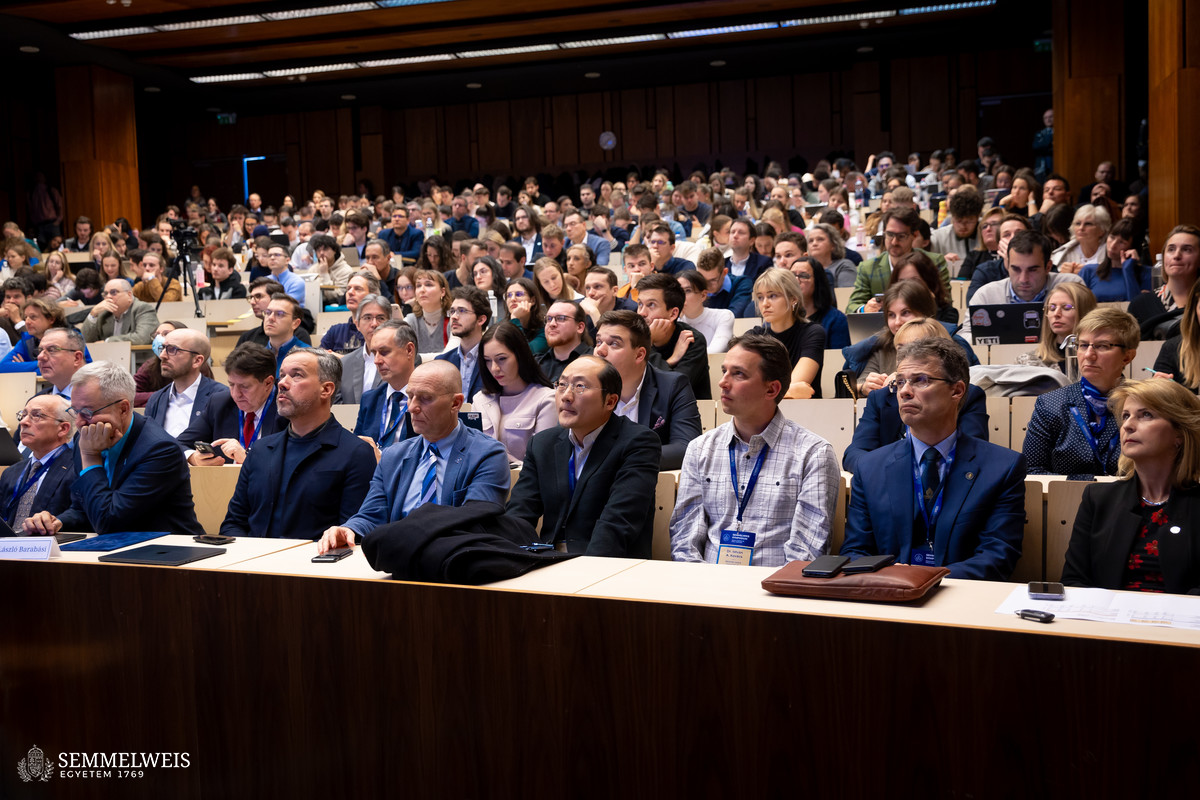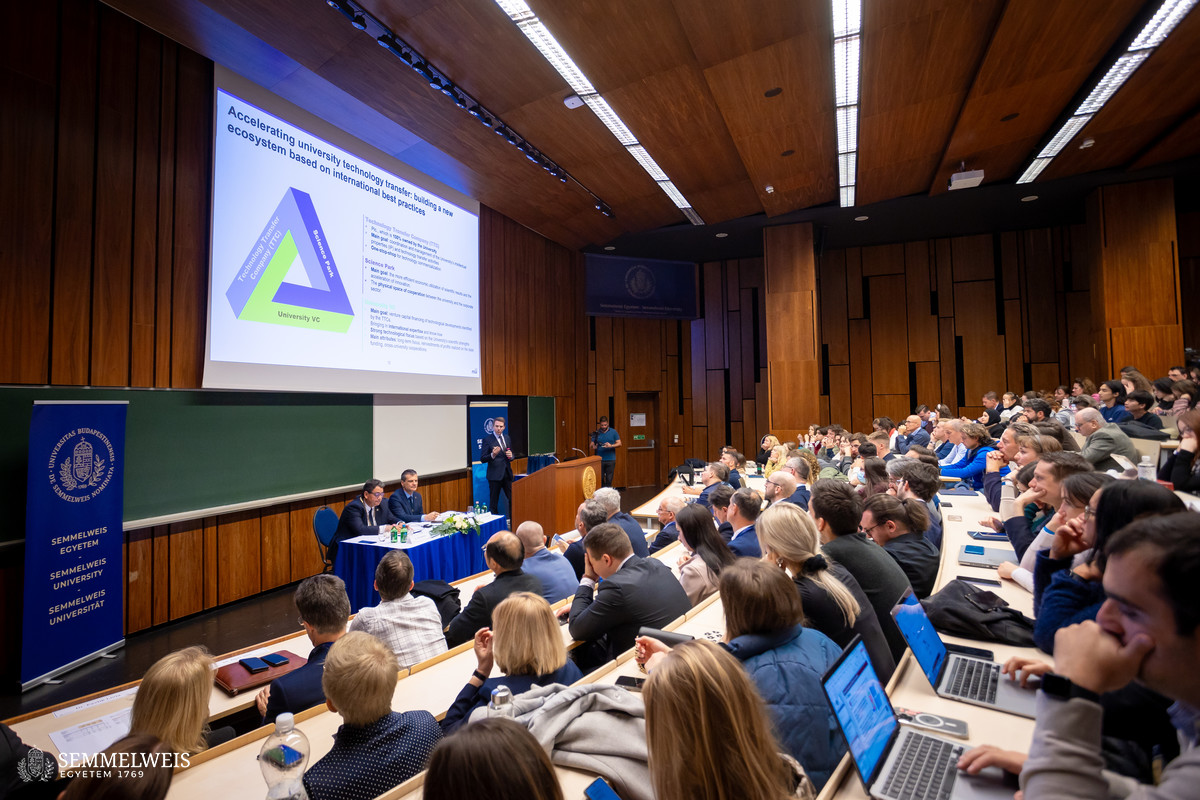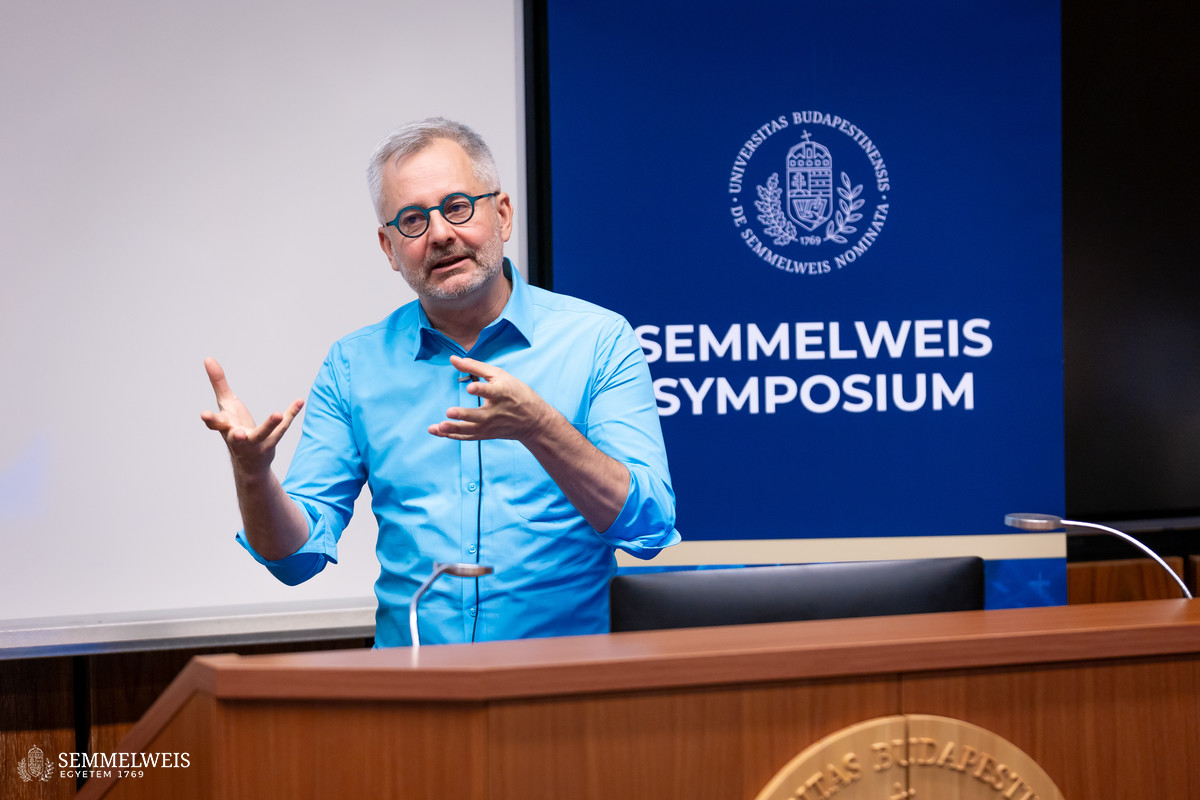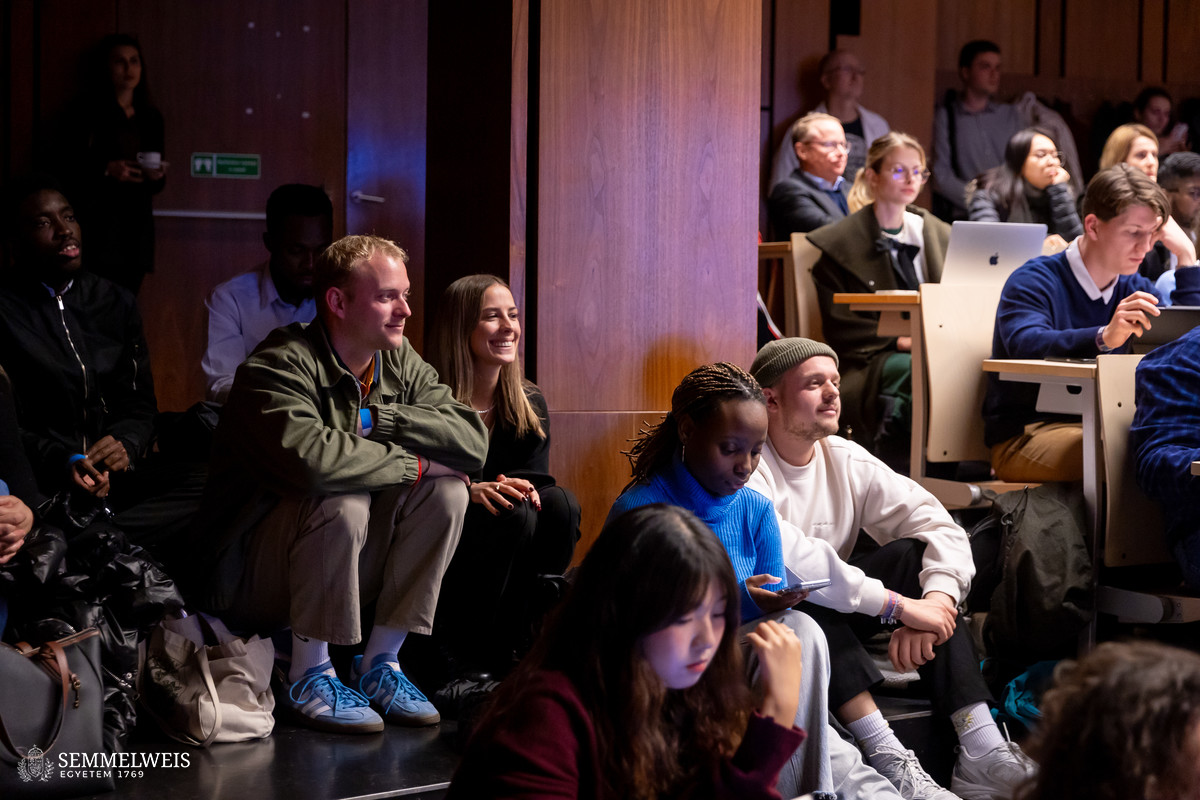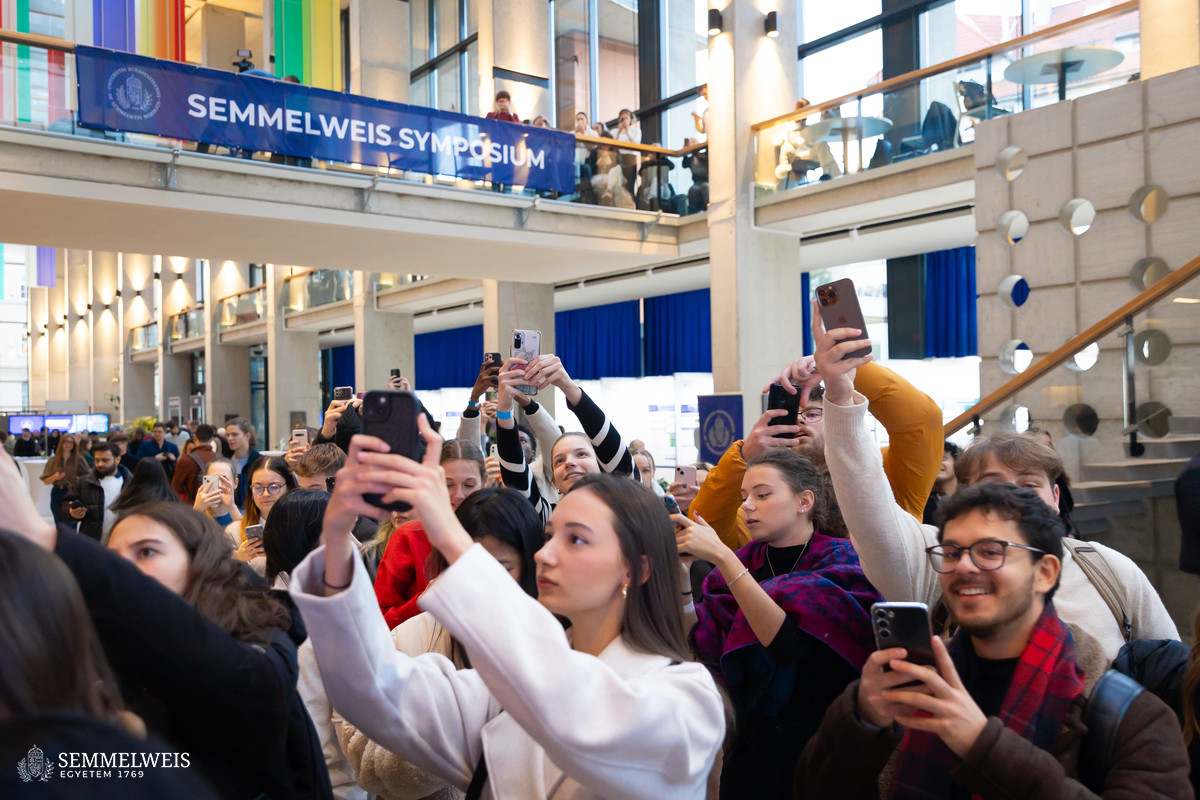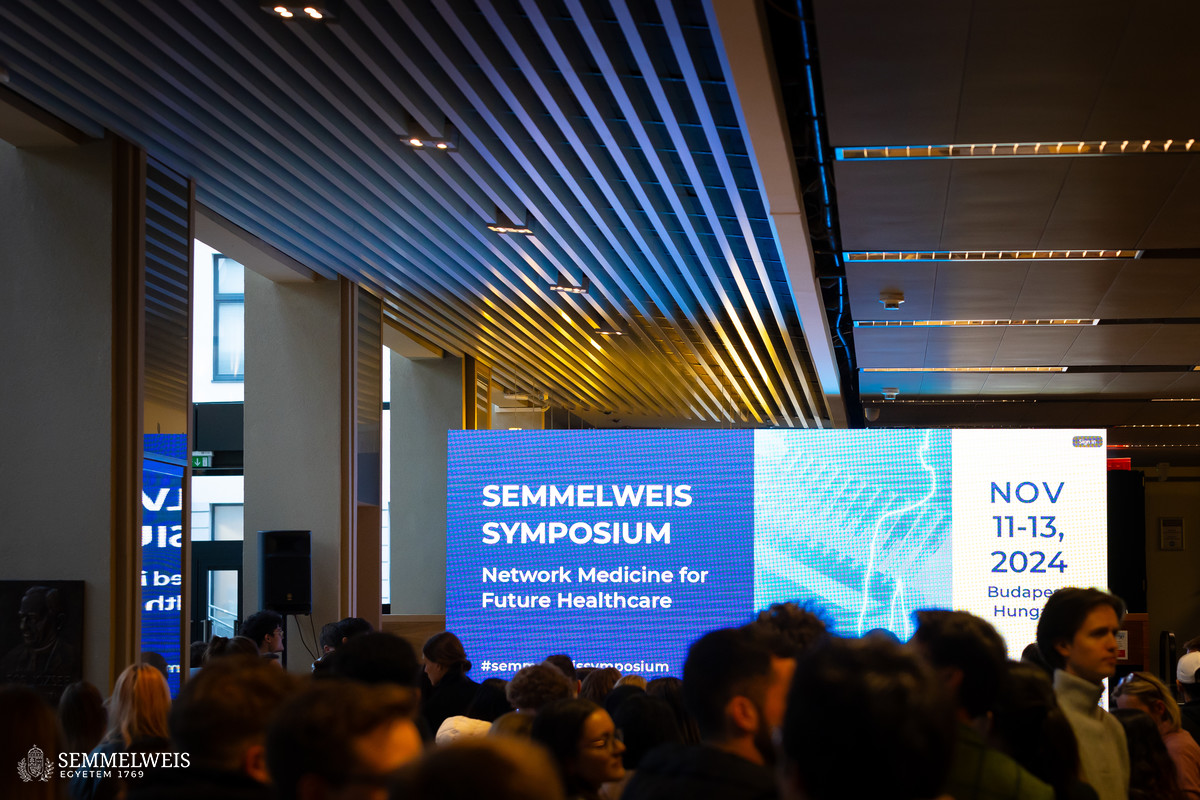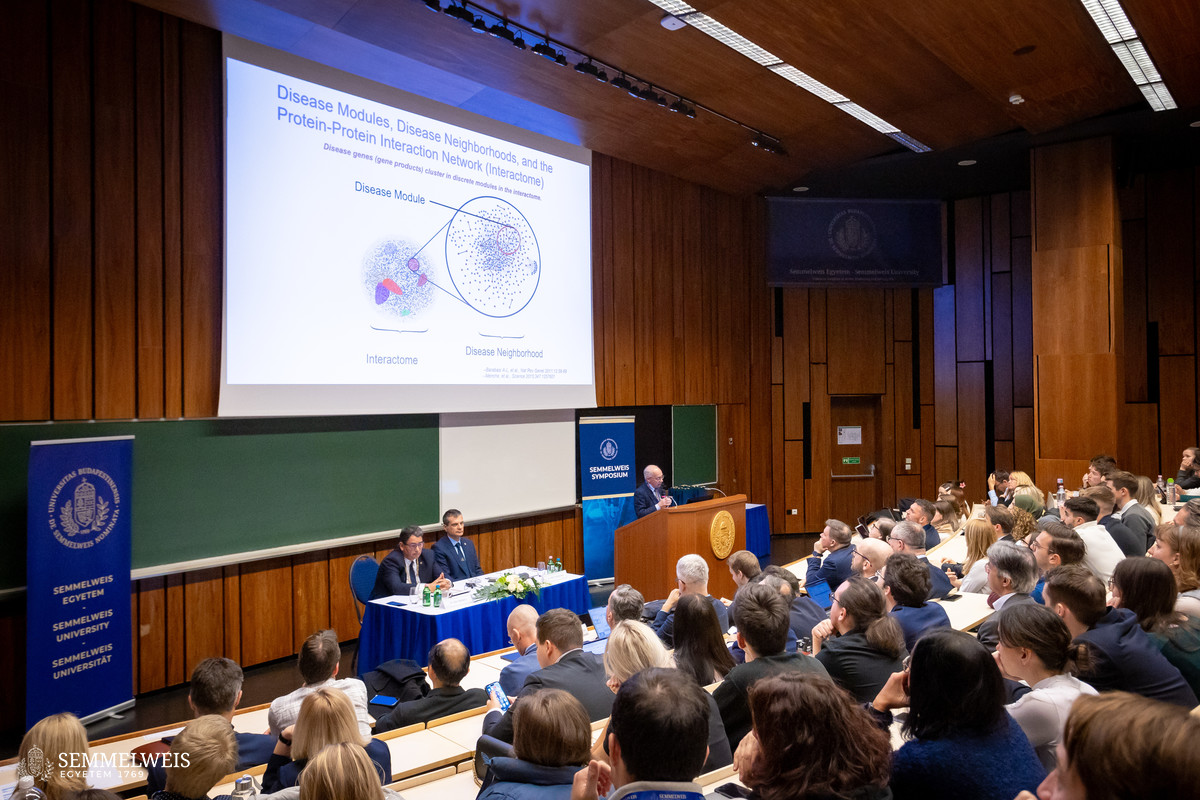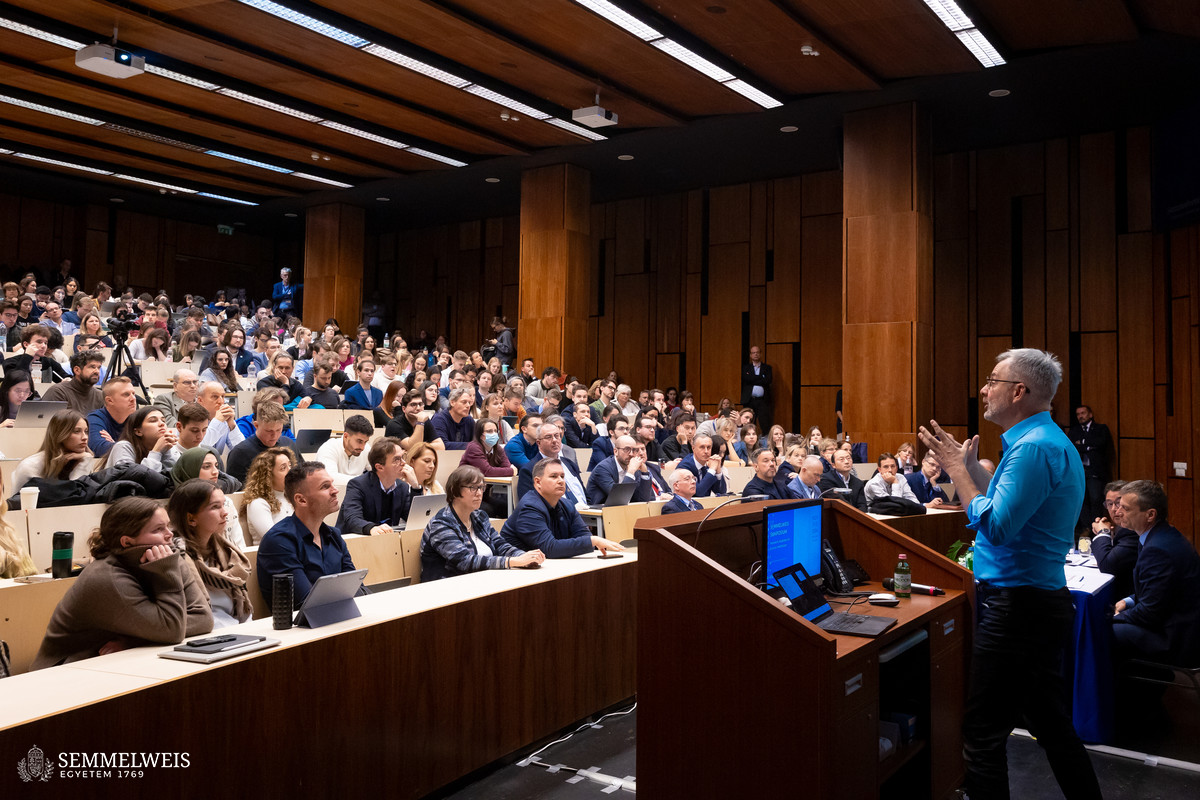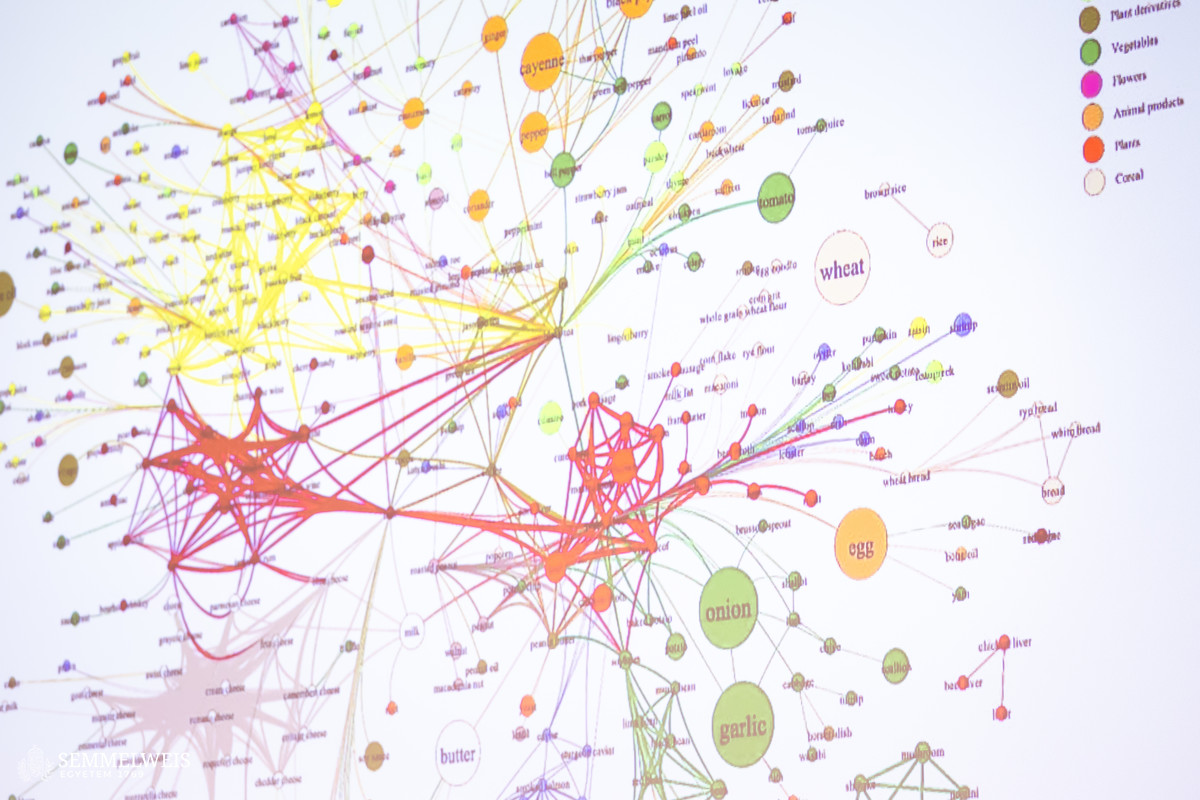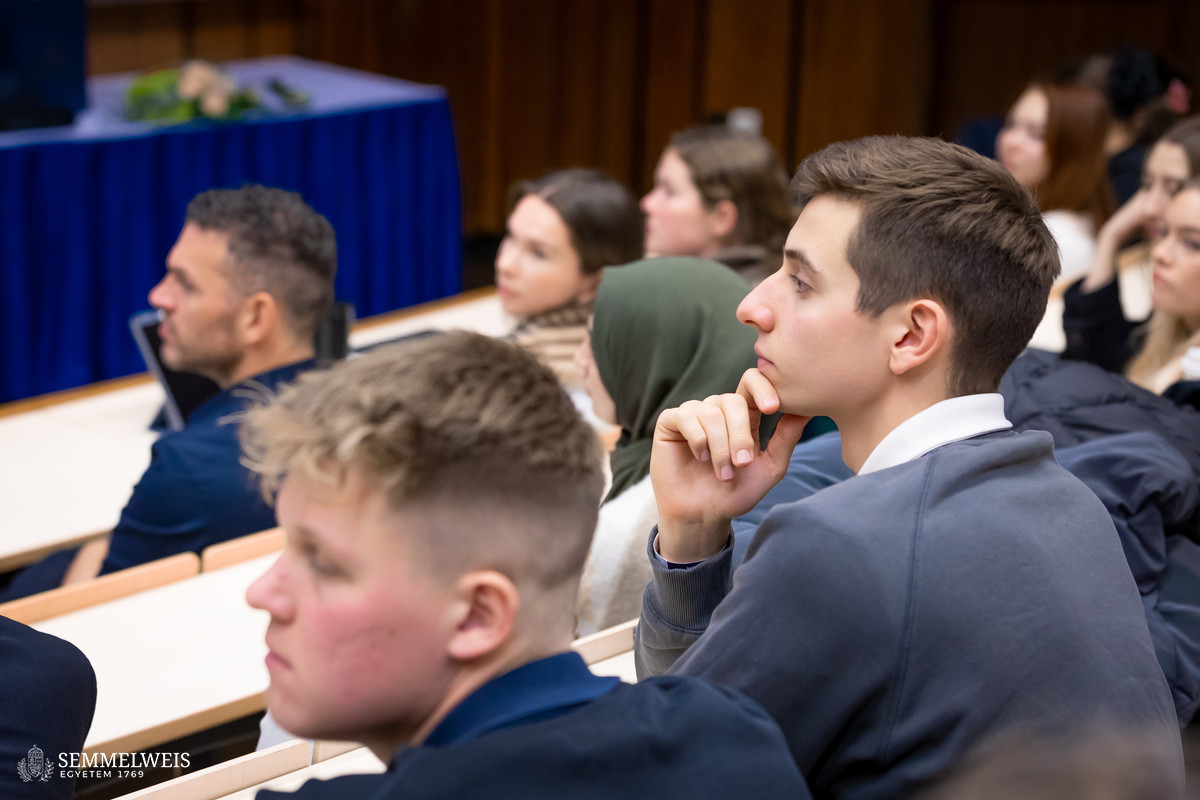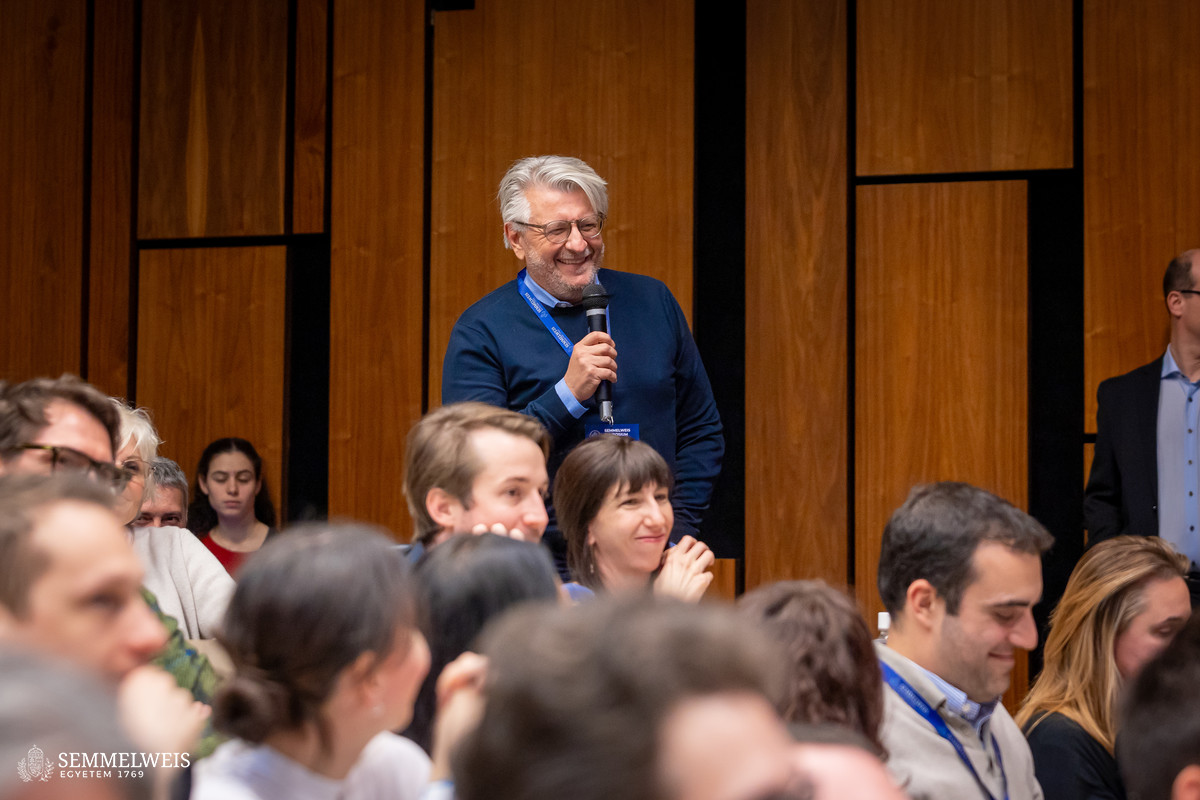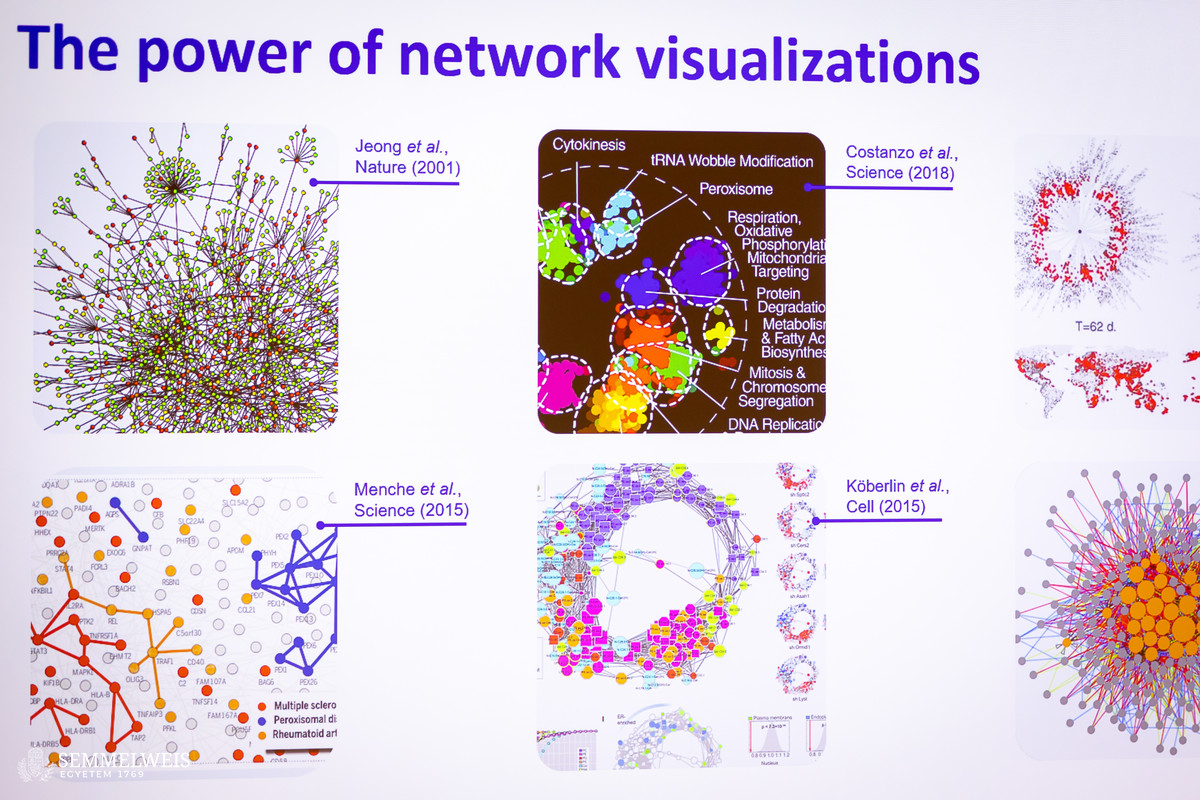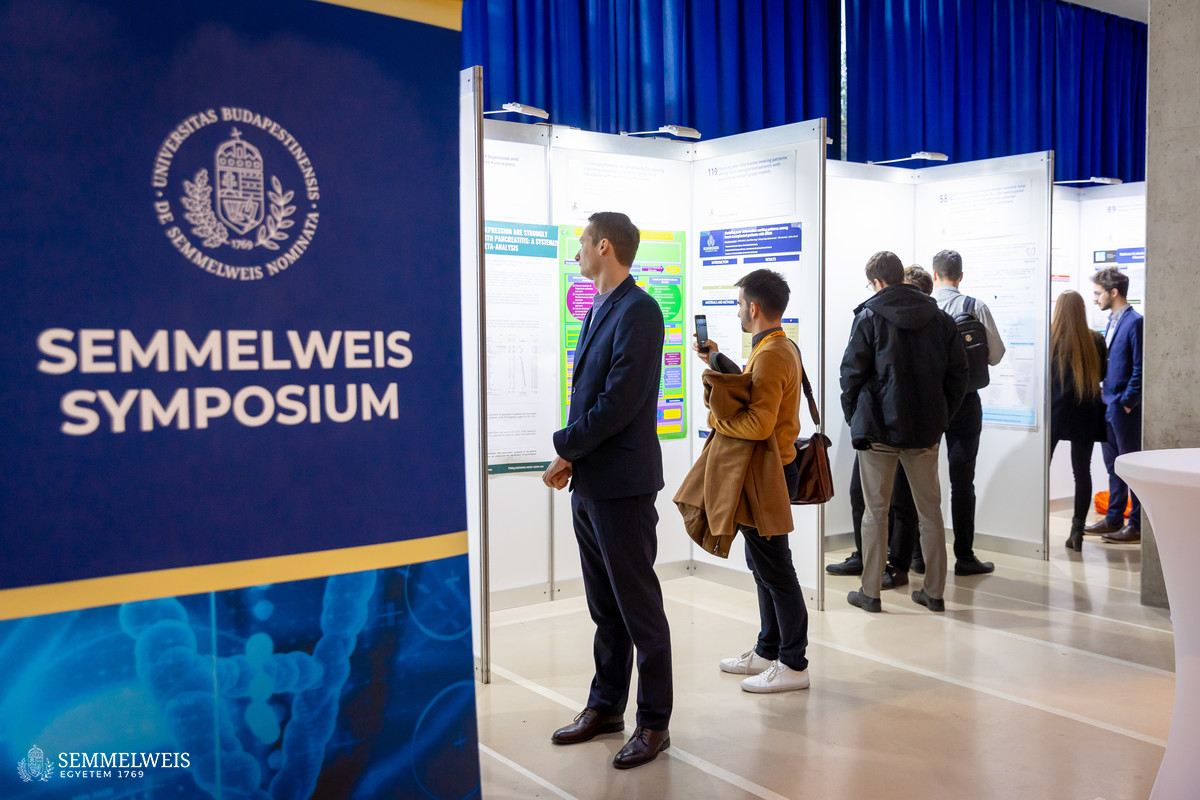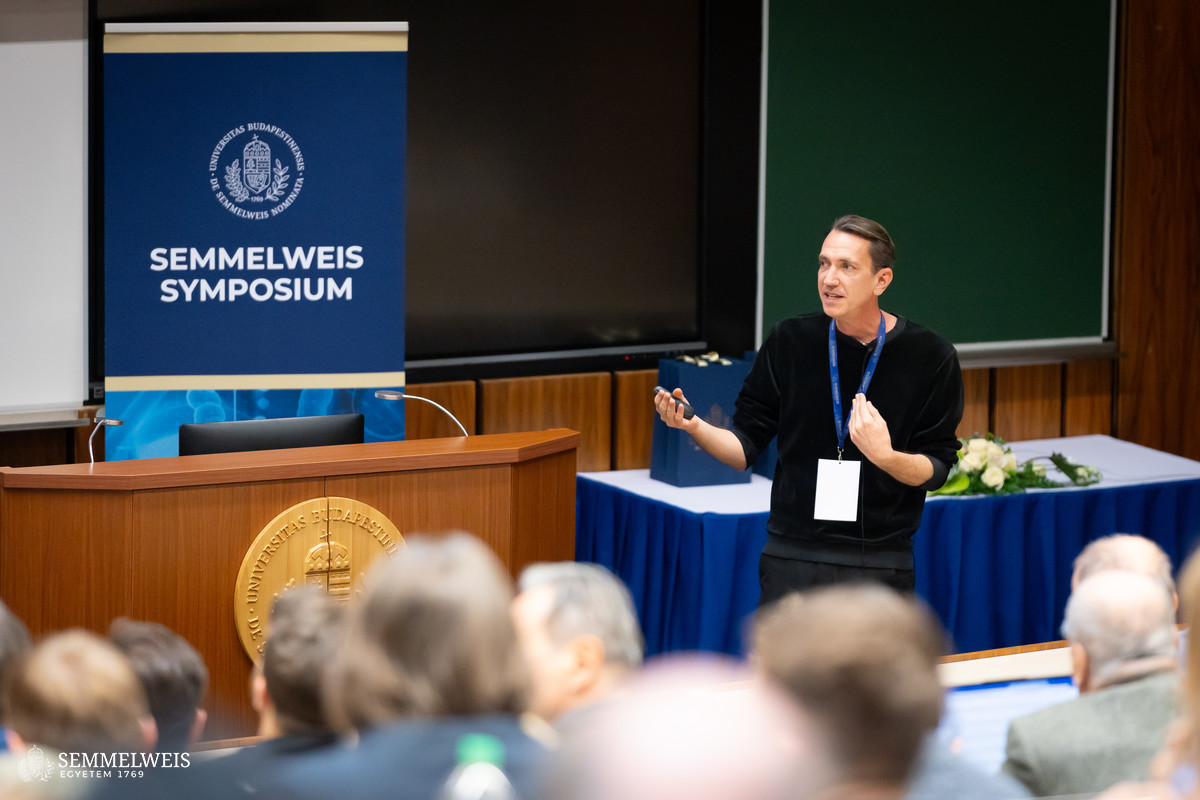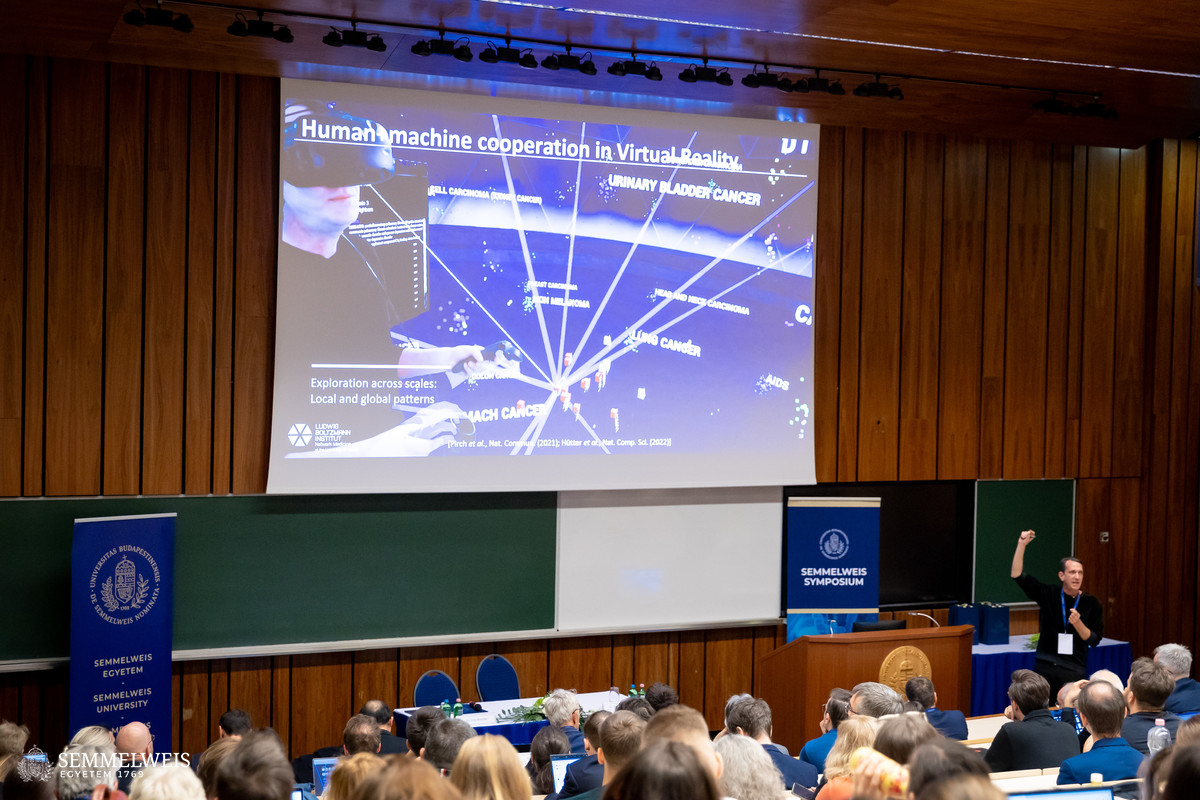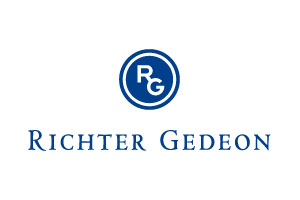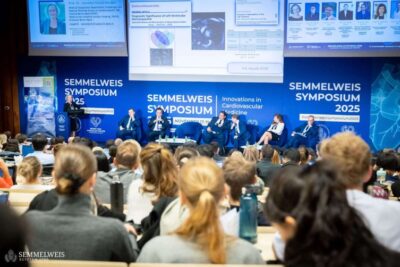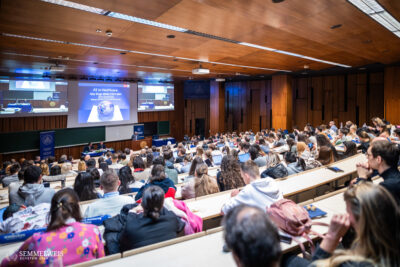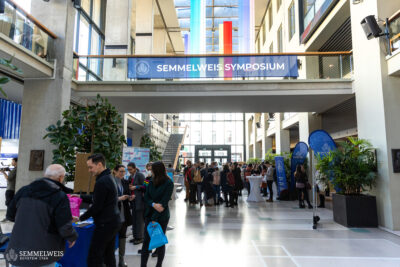Entitled “Network Medicine for Future Healthcare”, the 2024 three-day conference featured 35 speakers from around the world, including presenters from Harvard, Karolinska, La Sapienza in Rome, and Maastricht University. The event offered innovative presentations on network science, drug repurposing, diseasome and comorbidities, and research in the fields of bioinformatics and artificial intelligence (AI).
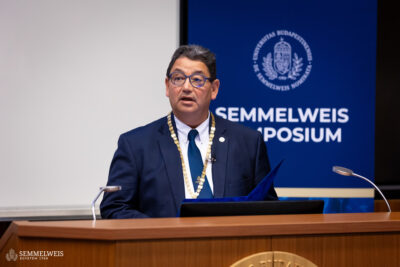 In his welcome remarks, Rector Dr. Béla Merkely highlighted the power of international knowledge transfer and the fundamental changes that can be achieved through cooperation across disparate, even distant scientific disciplines. “Network medicine can help us approach questions from a completely new perspective,” the rector noted. He explained that cardiovascular diseases and cancer, which were the leading causes of death worldwide, were examples of multifactorial disorders. He added that mapping the complex mechanisms that lead to such multifactorial diseases required collaboration between seemingly distant disciplines to provide a unified framework for understanding the molecular biological processes involved in them. As the rector pointed out:
In his welcome remarks, Rector Dr. Béla Merkely highlighted the power of international knowledge transfer and the fundamental changes that can be achieved through cooperation across disparate, even distant scientific disciplines. “Network medicine can help us approach questions from a completely new perspective,” the rector noted. He explained that cardiovascular diseases and cancer, which were the leading causes of death worldwide, were examples of multifactorial disorders. He added that mapping the complex mechanisms that lead to such multifactorial diseases required collaboration between seemingly distant disciplines to provide a unified framework for understanding the molecular biological processes involved in them. As the rector pointed out:
Network medicine could be the key to taking a real step forward in preventing, diagnosing, and curing diseases that were previously thought to be incurable.
 In his introductory presentation, Dr. Péter Ferdinandy, Vice-Rector for Science and Innovations, outlined Semmelweis University’s coordinated strategy to climb the rankings. He stressed that in addition to outstanding scientific performance and the innovation ecosystem supporting it, promoting excellence, and increasing the number of patents and spin-offs, this goal was also served by boosting international cooperation. Given that scientific output is based on the number of PhD students, the university has introduced flexible doctoral programs, doubling the number of PhD students in 6 years. As a result, both the number of Q1-rated publications and the citation impact have undergone a significant increase. As he pointed out, the university’s RDI strategy aimed to stimulate the innovation culture and support business development, technology transfer, and core facilities. Dr. Péter Ferdinandy also introduced the university’s Science Park project, which will strengthen the cooperation between the university and the industry.
In his introductory presentation, Dr. Péter Ferdinandy, Vice-Rector for Science and Innovations, outlined Semmelweis University’s coordinated strategy to climb the rankings. He stressed that in addition to outstanding scientific performance and the innovation ecosystem supporting it, promoting excellence, and increasing the number of patents and spin-offs, this goal was also served by boosting international cooperation. Given that scientific output is based on the number of PhD students, the university has introduced flexible doctoral programs, doubling the number of PhD students in 6 years. As a result, both the number of Q1-rated publications and the citation impact have undergone a significant increase. As he pointed out, the university’s RDI strategy aimed to stimulate the innovation culture and support business development, technology transfer, and core facilities. Dr. Péter Ferdinandy also introduced the university’s Science Park project, which will strengthen the cooperation between the university and the industry.
 The Hungarian model for accelerating research and innovation was presented by László Bódis, Deputy State Secretary for Innovation of the Ministry of Culture and Innovation (KIM) and CEO of the Hungarian Innovation Agency (NIÜ). He started by describing Hungary’s strengths and position within the international innovation and competitiveness landscape. After summarizing the challenges to European competitiveness and the domestic innovation ecosystem, he continued by elaborating on the Hungarian model. This aims to achieve results through tax breaks, the National RDI Fund, bringing leading European, American, and Asian R&D activities to Hungary, and tightening the links between academia and industry. He also listed the focus areas in Hungarian deeptech, such as digitalization, green transition, healthy living, and security. In this way, the Hungarian R&I strategy aims to ensure that Hungarian scientists continue to play a leading role in the international scientific community; solve the challenges facing society, such as energy production, aging, and AI transformation; and strengthen the competitiveness of the market. László Bódis emphasized that university technology transfer could be accelerated by an ecosystem based on international best practices; the Technology Transfer Company, a university-owned corporation, the Science Park, and the university venture capitals all contribute to this goal.
The Hungarian model for accelerating research and innovation was presented by László Bódis, Deputy State Secretary for Innovation of the Ministry of Culture and Innovation (KIM) and CEO of the Hungarian Innovation Agency (NIÜ). He started by describing Hungary’s strengths and position within the international innovation and competitiveness landscape. After summarizing the challenges to European competitiveness and the domestic innovation ecosystem, he continued by elaborating on the Hungarian model. This aims to achieve results through tax breaks, the National RDI Fund, bringing leading European, American, and Asian R&D activities to Hungary, and tightening the links between academia and industry. He also listed the focus areas in Hungarian deeptech, such as digitalization, green transition, healthy living, and security. In this way, the Hungarian R&I strategy aims to ensure that Hungarian scientists continue to play a leading role in the international scientific community; solve the challenges facing society, such as energy production, aging, and AI transformation; and strengthen the competitiveness of the market. László Bódis emphasized that university technology transfer could be accelerated by an ecosystem based on international best practices; the Technology Transfer Company, a university-owned corporation, the Science Park, and the university venture capitals all contribute to this goal.
Established in 2016, the Network Medicine Alliance comprises 34 institutions and universities, including Semmelweis. Its mission is to expand international collaboration in interdisciplinary research to understand the causes of human diseases and develop new treatments.
In his lecture introducing network medicine, Joseph Loscalzo, Professor at Harvard Medical School and founder of NMA, pointed out that the definition of diseases varied throughout history, with their names being based on abstractions or semantics, such as the ‘Antonine Plague.’ The science-based study of disorders entered a new phase in the 19th century with the discoveries of Semmelweis, Pasteur, Koch, and Lister, among others. The 20th century was characterized by biochemical and molecular approaches, while the 21st century saw the advent of genomics, bringing with it the problem of reassembling the relationships between huge amounts of data. In the age of omics and big data, the limitations of the reductionism that had characterized science so far have become increasingly apparent. This insight gave rise to a new scientific paradigm, network medicine, which recognized that most biological systems form a complex and molecular network that can be analyzed in quantitative terms.
Network medicine is a highly interdisciplinary field that applies these approaches to disease pathology and treatment. It can define disease without oversimplification and within all of its richly complex genomic and environmental context, thus it provides a path to precision medicine, and it facilitates drug target identification and drug repurposing. Network medicine takes our understanding of the impact of the environment, including food, on health to a new level.
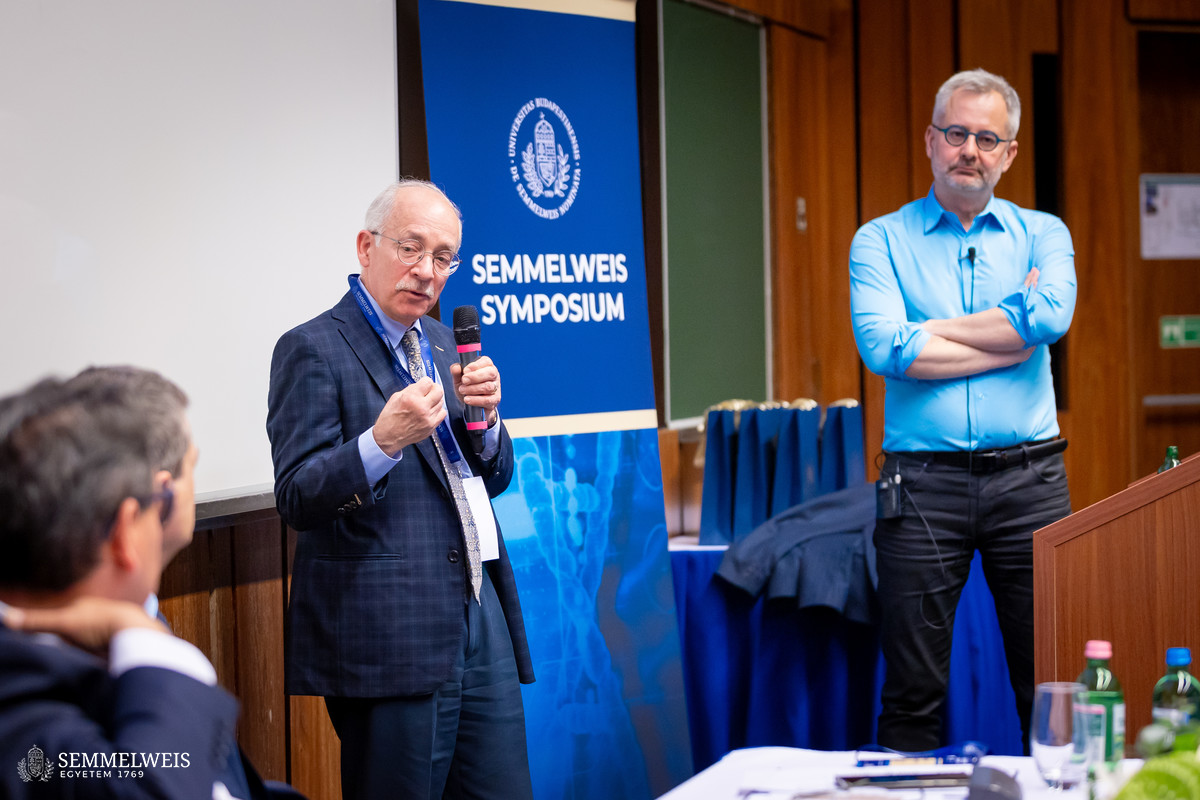
Dr. Albert-László Barabási, physicist, Professor at Northeastern University, Harvard Medical School, and Central European University, the co-founder of NMA, explained the importance of network medicine by saying that while genomics provided an inventory of the genome and its components, network medicine mapped the connections between proteins within the cell that were responsible for the cell’s function and, with the deterioration of a given function, for the development of disease. This also means that the genes or proteins responsible for a given disease are located close to each other, forming a disease module, and similar diseases, such as asthma and chronic obstructive pulmonary disease, involve genes located close to each other. This insight has helped researchers offer a therapeutic solution for COVID-19 in a fraction of the time, as opposed to the 10-15 years required to develop new drugs, by using already existing drugs. Dr. Albert-László Barabási shared that in the United States, only 10-20 percent of deaths were of genetic origin, the rest were due to environmental factors, so network medicine also aimed to research the effect of environmental factors, especially nutrition, on health, which he illustrated by describing the compounds of garlic, basil, and green tea. At the end of his presentation, he also discussed how artificial intelligence could be put at the service of network medicine.
The opening ceremony was followed by a session on diseasome and comorbidities, moderated by Dr. Jörg Menche, Professor at the University of Vienna, and Dr. Péter Ferdinandy. In his keynote speech, Dr Jörg Menche gave a glimpse into the future of network medicine. Dr. Dezső Miklós, Deputy Director of the HUN-REN Alfréd Rényi Institute of Mathematics, gave a presentation on the AI-powered analysis of electronic health records in a population-wide setting. Dr. Maurizio Sessa, Associate Professor at the University of Copenhagen, discussed AI and Intelligent Automation in Pharmacovigilance and Pharmacoepidemiology; while Julia Guthrie, Principal Investigator at the Ludwig Boltzmann Institute for Network Medicine, presented the network-based perspective of autoimmunity and autoinflammation.
Learn more about the second and third days of the symposium and the poster competition in the upcoming part of our report.
Judit Szabados-Dőtsch
Photos by Boglárka Zellei – Semmelweis University
Sponsor:
